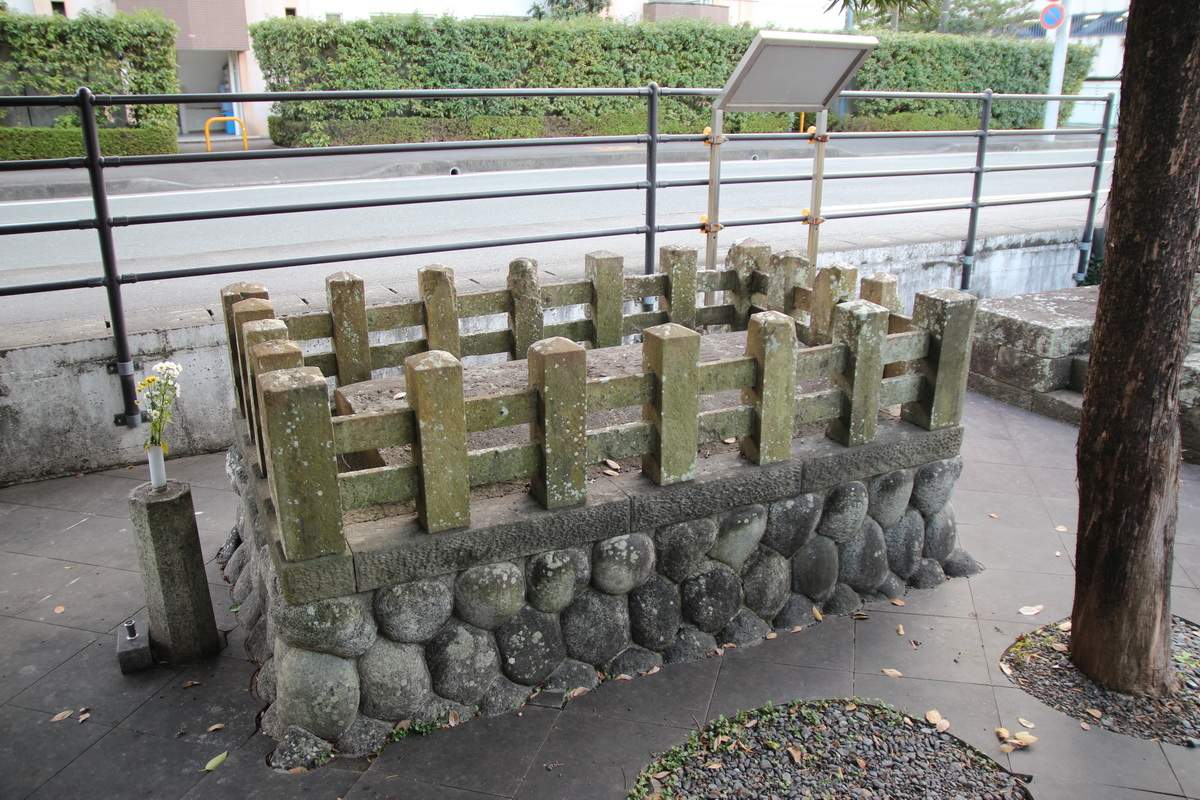Gijsbert Hemmij's death
We know a number of Dutch people from the VOC period were not buried in Nagasaki but elsewhere. Notes in the journals of the chief factors indicate the last resting places of at least four of them. One of the deaths that appeals most to our imagination and perhaps the best known is that of Gijsbert Hemmij.
Hemmij became chief factor on Dejima in 1792 and did not stay for the standard term of one year but until his death in 1798. They were tumultuous times because the Batavian Republic had been proclaimed in the Netherlands and the VOC had been nationalised but the official trips to the Shogun in Edo simply carried on as usual. After the audience in Edo, Hemmij became ill under suspicious circumstances on his return trip. Some said that he had been poisoned by people who were jealous of the trade he had set up for himself. He died in the little town of Kakegawa, around 200 kilometres to the southwest of Edo, on 8 June 1798. He was buried on the spot, at the Tennenji temple, with a modicum of ceremony the next day. Besides his travelling companions, Dr Letzke and bookkeeper Ras, the most prominent Japanese in their escort were also present at the funeral.

A gravestone was erected on his grave. The tombstone currently present shows the same rounded form as many others at the Dutch Cemetery in Nagasaki but it lies on a raised platform of round cobbles that have been artfully cemented together and a sort of fence of the same material as the tombstone has been erected around it. The following text is depicted on the tombstone:
HIER ONDER RUST HET STERFELYKE GEDEELTE VAN DEN WELEDEL ACHTBAAR HEER MR GYSBERT HEMMY IN ZYN EDELENS LEEVEN OPPER KOOPMAN EN OPPERHOOFD VAN DEN JAPANSCHEN HANDEL GEBOOREN DEN 16 JUNY 1747 EN OVERLEEDEN DEN 8 DITO A[NNO] 1798 EN BEGRAAVEN DEN 9 JUNY 1798
(HERE LIE THE MORTAL REMAINS OF THE HONOURABLE MR GYSBERT HEMMY FORMER SENIOR MERCHANT AND CHIEF FACTOR OF THE JAPANESE TRADE BORN ON 16 JUNE 1747 AND DIED ON 8 DITTO A[NNO] 1798 AND BURIED ON 9 JUNE 1798).
The funerary monument was restored in 2005 under the leadership of Mr Nanri. Although the text is no longer fully legible (this was already the case before 2005) the stone is in a relatively good condition. The gravestone is overgrown with lichens, but they are not harmful. A large, high memorial stone has been erected near the gravestone and the Dutch text from the original stone has been copied on to it with a Japanese translation.
References
- Blussé, L., Velde, P. en Viallé, C.; The Deshima dagregisters: Their original tables of contents, Vol. VIII: 1760-1780. lntercontinenta; no. 19. Leiden: Centre for the History of European Expansion, 1995
- Blussé, L. en Viallé, C.; The Deshima dagregisters: their original tables of contents, Vol. XII, 1650-1660. lntercontinenta; 25. Leiden: lnstitute for the History of European Expansion, 2005
- Blussé, Leonard en Viallé, Cynthia, The Deshima dagregisters, Volume XI 1641-1650, Leiden 2001
- Eb-Brongersma, Titia van der; De Hollandsche Begraafplaats in Nagasaki. Een cultuurhistorisch erfgoed, Oegstgeest 2017
- Miyanaga, Takashi; Brief notes concerning Dutch gravestones in Japan. – the names of Dutchmen buried in the graveyards of Japanese temples and in foreign cemeteries in Japan (1621-1982), Tokyo 1988
- Last updated on .


